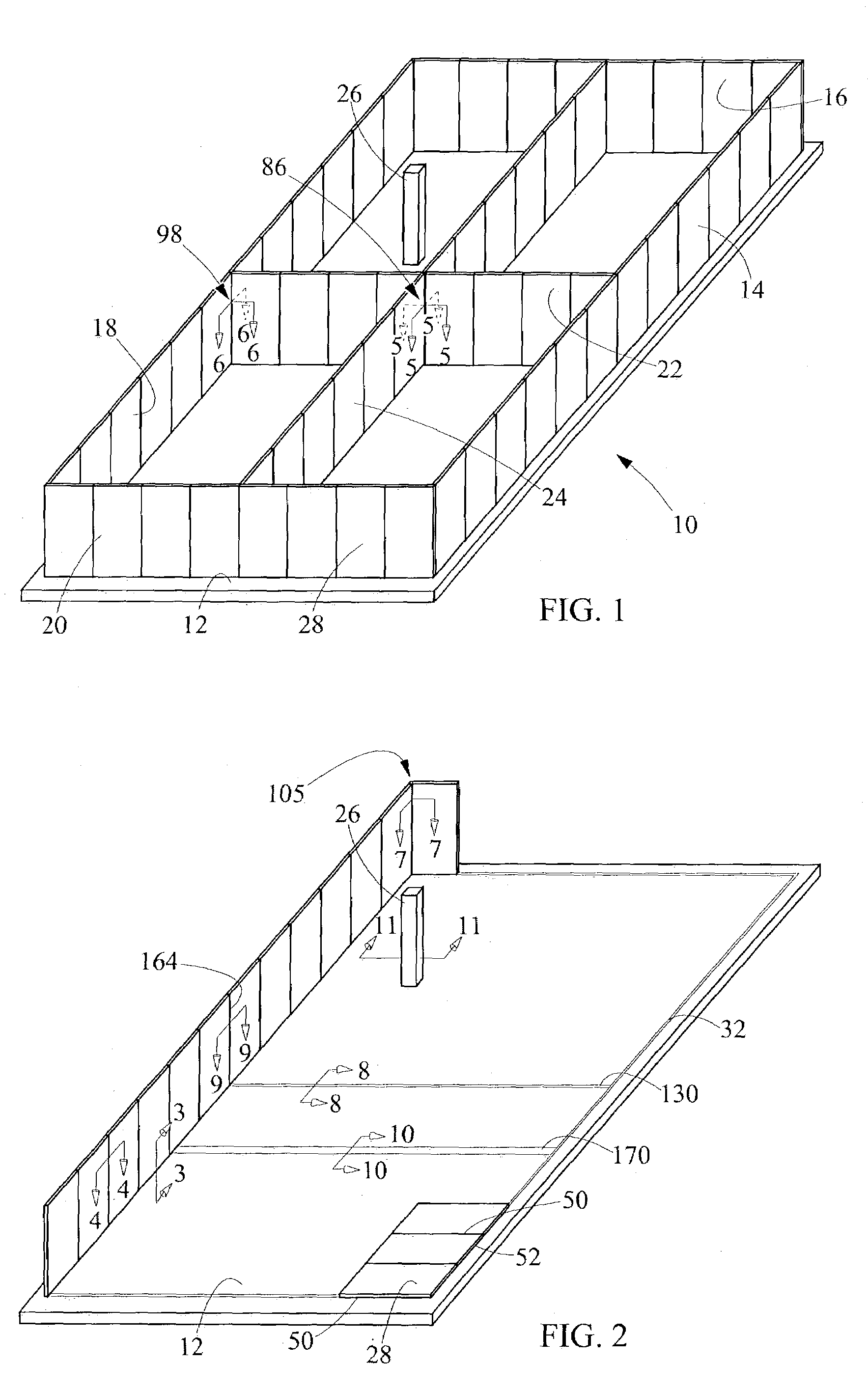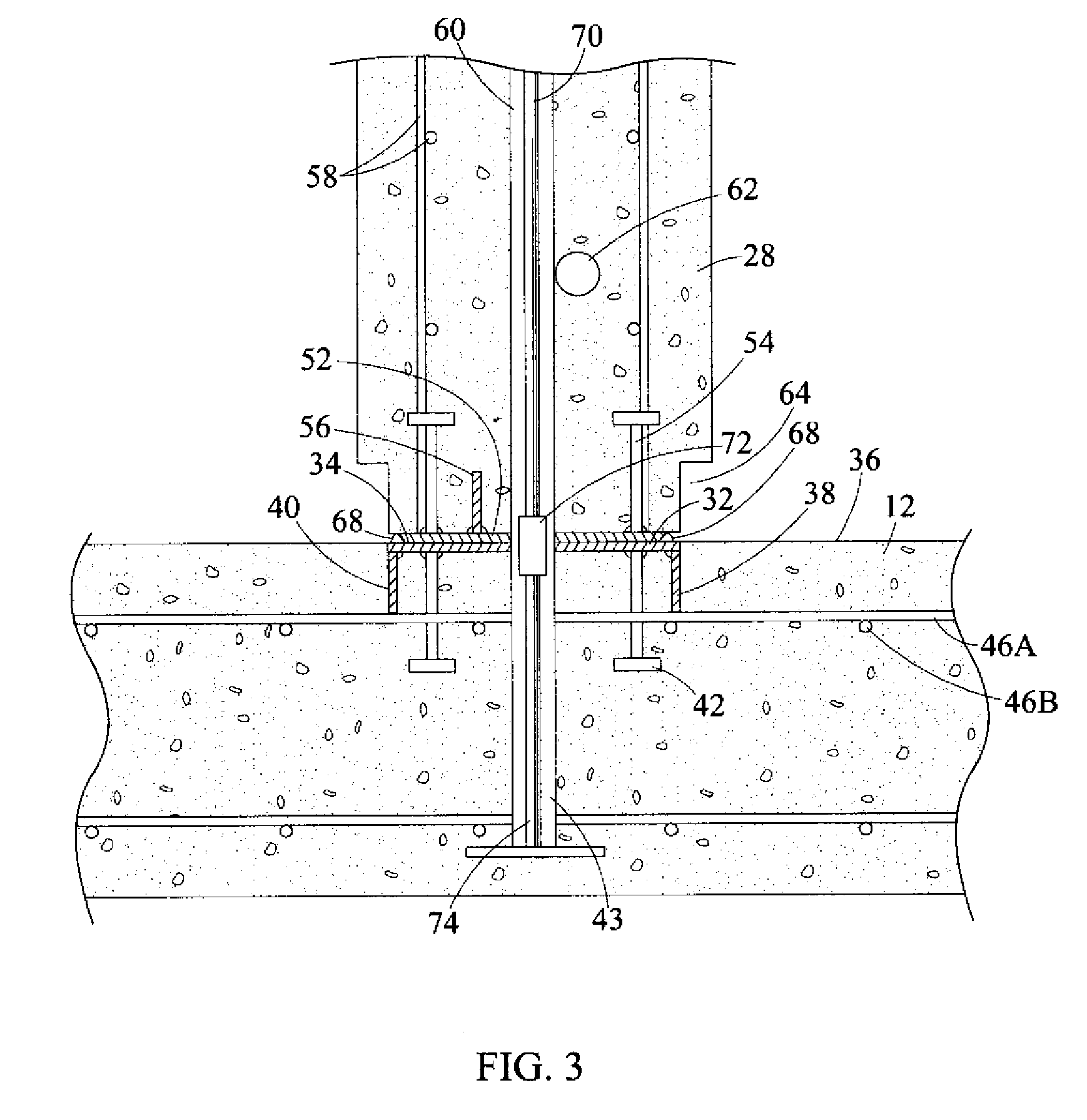Rectangular tilt-up concrete tank construction
a technology of tilt-up concrete and rectangular concrete, which is applied in the field of rectangular tilt-up concrete tank construction, can solve the problems of extreme safety hazards of conventional rectangular concrete tank construction, tripping hazards, and at worst, an instrument for severe injuries to workers, and achieves the effects of reducing the safety hazards associated, eliminating significant environmental deficiency, and convenient liquid tightening and repair
- Summary
- Abstract
- Description
- Claims
- Application Information
AI Technical Summary
Benefits of technology
Problems solved by technology
Method used
Image
Examples
Embodiment Construction
[0027]A rectangular tilt-up concrete tank 10 is shown in a perspective view in FIG. 1. The rectangular tilt-up concrete tank 10 includes a concrete slab 12 and four side walls 14, 16, 18, 20 extending therefrom. Within a volume defined by the rectangular tilt-up concrete tank 10 one or more longitudinal dividing walls 24 and / or one or more transverse dividing walls 22 may be included to form compartments or direct flow. In addition, one or more columns 26 may be included within the tank to support a roof or other ancillary structures, which are not illustrated in FIG. 1 for the sake of clarity. Each of the side walls 14, 16, 18, 20 are made up of a number of preformed concrete side panels 28. At a minimum, the tilt-up concrete tank 10 consists of the bottom slab 12 and side walls 14, 16, 18, 20. The interior walls 22, 24, column 26 or a roof (not shown), as well as other interior structures, such as walkways and ladders, may be included as required by the purpose of the tank. In a m...
PUM
 Login to View More
Login to View More Abstract
Description
Claims
Application Information
 Login to View More
Login to View More - R&D
- Intellectual Property
- Life Sciences
- Materials
- Tech Scout
- Unparalleled Data Quality
- Higher Quality Content
- 60% Fewer Hallucinations
Browse by: Latest US Patents, China's latest patents, Technical Efficacy Thesaurus, Application Domain, Technology Topic, Popular Technical Reports.
© 2025 PatSnap. All rights reserved.Legal|Privacy policy|Modern Slavery Act Transparency Statement|Sitemap|About US| Contact US: help@patsnap.com



